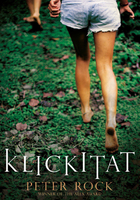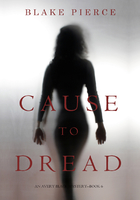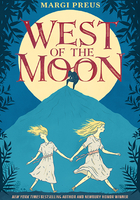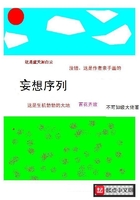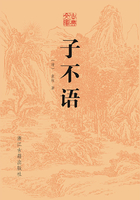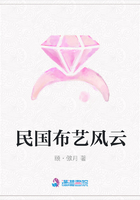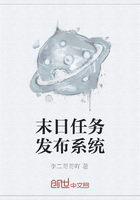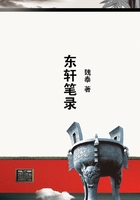BEING CALLED A "knitting rock star" is like being voted the best Pakistani restaurant by the Bangor Daily News. It's an honor, but not the kind that'll get you a last-minute table at Le Bernardin or an order of chivalry from the Queen. No doorman has ever pulled aside the velvet cord for a famous knitter. And yet after more than a decade of hard work and persistent diligence, I find myself being labeled as such. I've been lucky.
And what does a knitting rock star look like, you ask? For starters, I intentionally reside in a town of 910, my bedtime rarely inches past 10 p.m., and my version of trashing a hotel room involves twice stealing the salt and pepper shakers from my room service tray-though, in my defense, I did give a generous tip.
I can swear like a sailor, but I'm a fiercely loyal friend and will do almost anything to avoid hurting someone's feelings. I haven't had a "real" day job in twelve years. I miss direct deposit and paid time off, and-oh my-how I long for that posh health insurance policy.
Since turning my life over to yarn, I've lived easily a dozen lives. It's been at times thrilling, scary, and devastating. The road has had some stunning vistas, a few steep inclines, and its share of rim-bending potholes. My inner airbags have deployed more than once. But the path has always pulled me forward. I'm fortunate, and I'm grateful.
At the bottom of it all is one simple fact: I love yarn. Ever since I can remember, yarn has enchanted me. When I first asked my grandma-my mother's mother, who has figured prominently in my knitting life-to teach me how to knit, it wasn't to make anything in particular; I wanted to know how you made yarn work. I knew it had energy, that I could perform a series of actions with my hands that would bring it to life. To me, seeing those skeins of yarn was like finding a book written in a foreign language; I wanted to be able to read it.
Some need to knit to be happy. They churn through yard after yard of fabric, like lawn mowers, processing thoughts and worries as they go. Or they produce garment upon garment, careful, thorough masterpieces. I'm more sporadic in my progress, more interested in the journey than the destination. But I do need yarn. For me it represents the purest essence of what is good about knitting: possibility, an open road, limitless potential. Like the soil we work and the food we eat, yarn gives life.
Years ago, I was living in San Francisco and editing a technology magazine, the contents of which I didn't really understand. I'd stumbled back into knitting after years of being away, and it was a welcome source of oxygen for my increasingly stifled mind. I discovered a yarn store not too far from my office; it was my lunchtime refuge.
My stash grew wildly by the week-yarn, needles, tools, patterns, and books. Many, many books. Most were how-to books and pattern collections. I remember one in particular called Knitting in America. It had patterns, but they were all far too ornate and sophisticated for my skills. What I loved about this book was that it featured people from around the country who had figured out how to do what they love. They made their living in yarn, in raising animals, in dyeing, in designing…the paths were different, but the destination was the same. I felt a kinship, as if I'd finally found my people.
Fast-forward a few years. I'd moved to Maine and was working as a freelancer, still in technology. My coworker and I were conjuring an editorial start-up of our own. It was going to be all about people who'd found their way, who were living with their grain instead of against it. I would be the writer.
My colleague fed me names and stories he thought suitable for the project. A man who'd left his family behind to sail around the world for a year. Another man who'd made a fortune in investments. A third man who raced cars.
I opened up my trusty copy of Knitting in America and found my own stories. I picked Margrit Lohrer and Albrecht Pichler, the founders of Morehouse Merino, successful urban dwellers who had managed to create a meaningful parallel life in the country just north of New York City. I wrote their story, borrowing so heavily from Knitting in America that it teetered on the edge of plagiarism. The act of telling a story that resonated with me-the physical process of running those words through my mind and out my fingers onto a keyboard, screen, and eventually paper-energized me. It was so easy and fluent, as if I were finally speaking my native tongue after years of speaking someone else's. I was home.
When I shared the story with my colleague, he replied, "I get that you like the story, but really. Sheep?"
That was all I needed to hear. I politely backed out of the project, and, just four months later, sent out the first issue of Knitter's Review. Every week, I'd publish thoughtful, in-depth reviews of yarns, tools, books, and events that shaped the knitting experience. That was September 2000. It's safe to say that hundreds of yarns have flowed through my fingers since then; I've met thousands of people, written millions of words.
Stories are like buildings. You see them from the outside, you see their structure and potential, you see light in the windows and want to get inside. The writer's job is to find the right door. Once you do, the rest of the journey often comes easily. I'd found that door; my adventure was a gift. Today I open the pages of Knitting in America and realize that, quite by chance, many of its characters have since become personal friends. The leap from icon to friend is utterly surreal.
I remember meeting Meg Swansen in 1995, at my first Stitches West event. Already on yarn overload, I rounded a corner and came to a booth filled with books. A beautiful woman stood at the table. She turned to me and smiled that twinkly, electric smile. Time stopped as my mind connected the dots and I realized Meg Swansen was standing before me-the famous teacher, designer, author, and daughter of Elizabeth Zimmermann. My heart leapt and my mouth fell open, but no words came out. Instead, I walked away as quickly as I could. Twelve years later, we were sitting together under a plum tree in Oregon after the first Sock Summit, knitting and talking. When I stripped aside all the baggage we tend to add to famous people, I was amazed to discover that I really liked Meg as a person-her wisdom, humor, vulnerability, all of it.
That's been the most amazing part about this journey-the people. My quest to find good yarns and tell their stories has brought me face-to-face with an astonishing assortment of people I would never have met otherwise: Melinda Kjarum, who raises Icelandic sheep in Minnesota (when her oldest ram, Ivan, was still alive, she would rub his arthritic joints with pennyroyal oil each evening). Eugene Wyatt, a Merino sheep farmer who plays trombone to scare away the coyotes and frequently quotes Proust in his blog. Melanie Falick, the author of Knitting in America, who happened to edit the very same book you now hold in your hands. My circle is complete.
The knitting world has changed dramatically since I first entered it. The doors to the establishment have blown wide open. Each person has vastly more opportunity to carve out a niche for him-or herself. We have greater transparency in terms of what we're using and where it came from. And we have greater choices than ever before.
Buying yarn is easy. A few clicks, and we can see what other people thought of it, what they knit with it, how they liked it, and how much of it they still have left in their stash. We can find dozens, if not hundreds, of suitable patterns-and we can see what other yarns people used for those patterns, what they thought of them, how they worked out.
Filter the chatter, block out the surrounding landscape, and you're left with one thing: yarn. Therein lies the real adventure, and the key to my own heart. A good yarn is better than any table at Le Bernardin.
In Victorian times, people often spoke through flowers. They called it floriography. A single acacia signified secret love, an oxeye daisy called for patience, and the pear blossom spoke of lasting friendship. But, as in Agatha Christie's Miss Marple mysteries, some were harbingers of danger, dishonesty, even death. Women "corresponded" through flowers, able to communicate far deeper meaning through them than they could put into words.
What if it turns out we do the same thing with yarn, creating swatches and garments that, when deciphered, tell stories of their own? Stockinette, ribbing, cables, even the humble yarn over can instantly evoke places, times, people, conversations-all those poignant moments we've tucked away in our memory banks. Over time, those stitches form a map of our lives.
This book is a collection of my own musings on stitches-why we work them, what they do to fabric, and how they have contributed to the fabric of my own life. For life really is a stitch. It has a beginning, a midpoint, and an end. It serves a purpose, and if we're lucky, it creates something beautiful and enduring.

